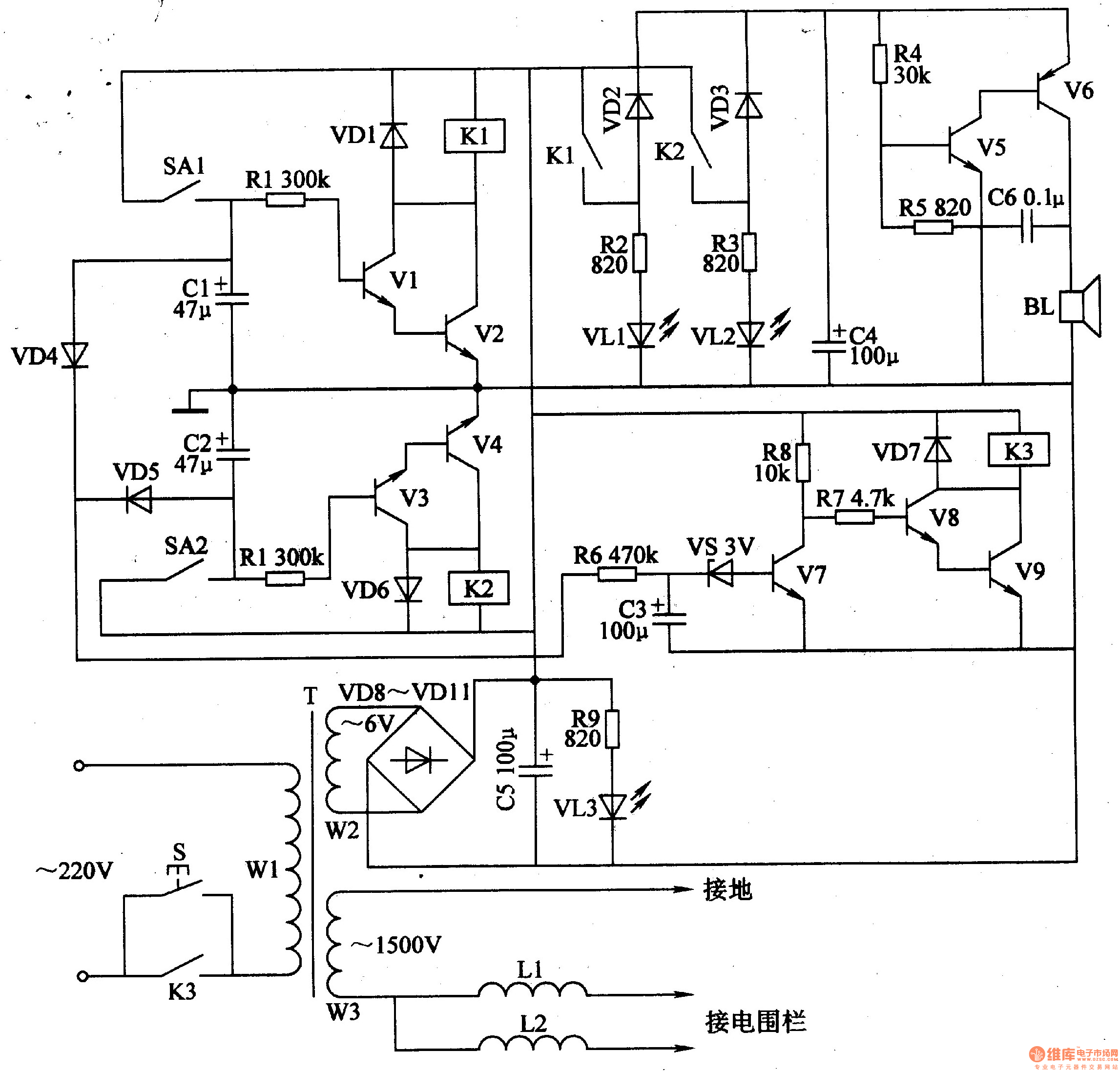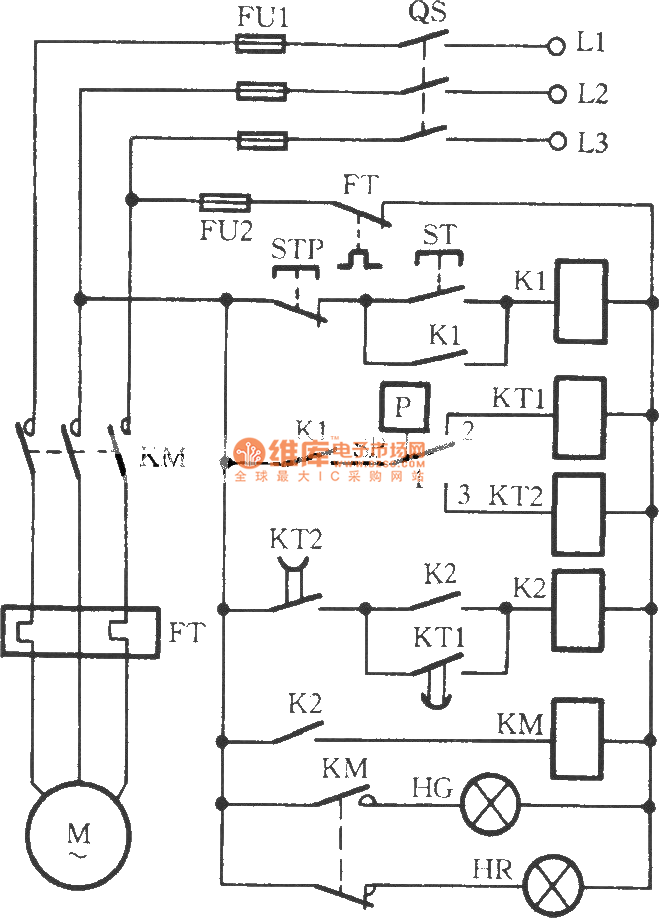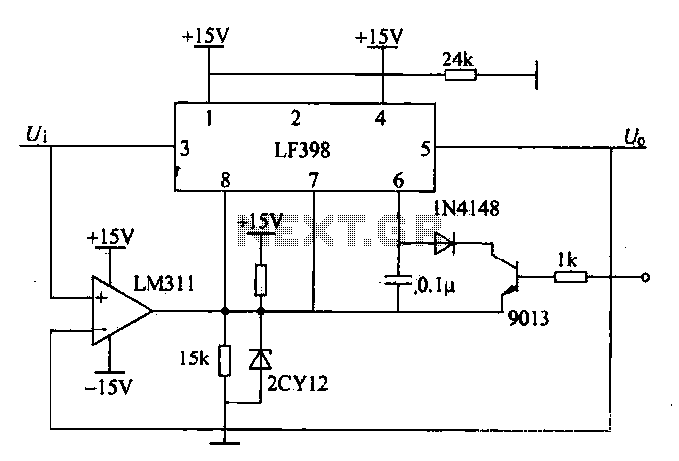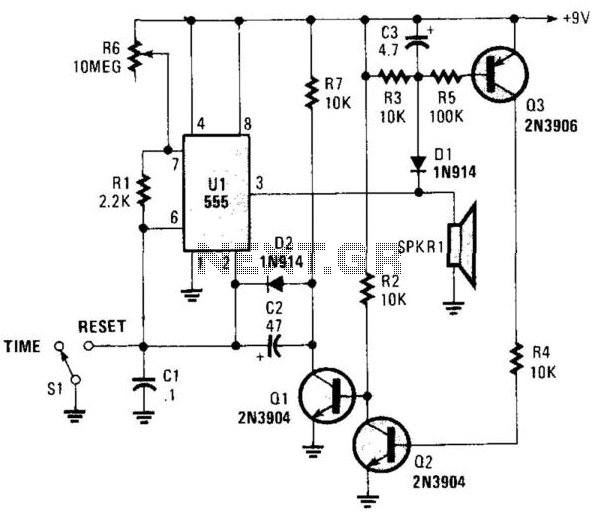
Automatic water tank circuit diagram
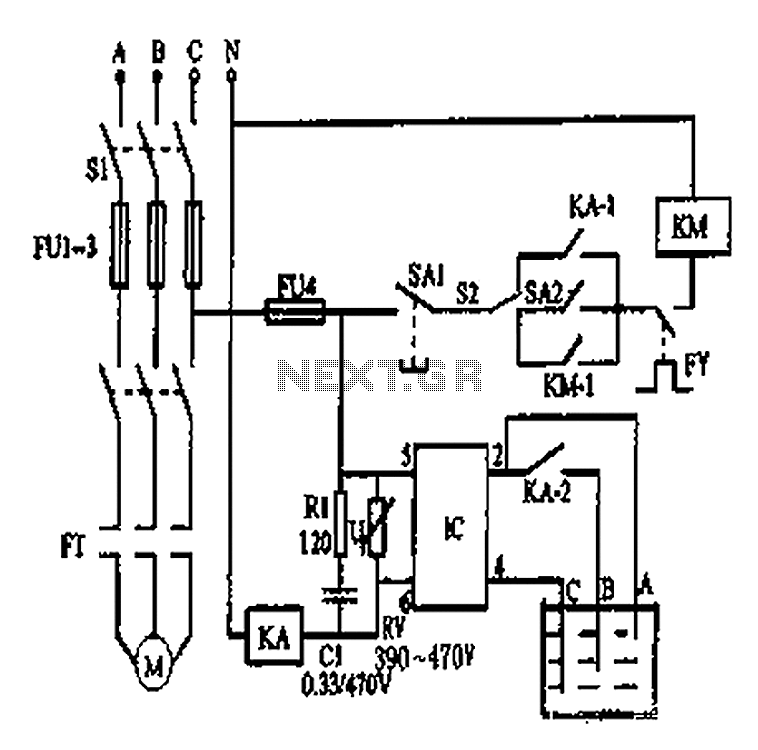
An automatic water tank system is illustrated in the circuit diagram. The circuit employs a PSSR AC solid-state relay, which is a new type of solid-state relay designed for AC applications. Unlike traditional solid-state relays (SSR), this PSSR not only features an active SSR drive function but also incorporates both drive and passive load power drive capabilities. The simple structure of the PSSR solid-state relay ensures reliable operation and low noise levels.
The automatic water tank system utilizes a PSSR AC solid-state relay to control the filling and draining of water in the tank. The PSSR is chosen for its robust performance in AC applications, providing enhanced functionality compared to conventional SSRs. This relay operates by switching the AC load on and off based on the water level detected by sensors installed in the tank.
In this system, water level sensors are strategically placed at various heights within the tank. These sensors continuously monitor the water level and send signals to the PSSR relay. When the water level falls below a predefined threshold, the sensor activates the relay, which in turn powers the water pump to fill the tank. Conversely, when the water level reaches a certain upper limit, the sensor deactivates the relay, stopping the pump to prevent overflow.
The advantages of using a PSSR relay in this application include its low noise operation, which is essential in residential settings, and its reliable performance, minimizing the risk of system failures. Additionally, the passive load power drive feature allows the relay to manage various load types efficiently, ensuring that the water pump operates optimally under different conditions.
Overall, this automatic water tank system exemplifies modern advancements in solid-state relay technology, providing an efficient and reliable solution for water management in various applications. The integration of sensors and a PSSR relay enhances the system's automation capabilities, promoting water conservation and operational efficiency. Automatic water tank as shown in the circuit diagram. IC is PSSR AC solid state relay, which is developed in the SSR on the basis of a new type of solid-state relays AC non-con tact relay, compared with the SSR, it not only has an active SSR drive function, but also has the drive and passive load power drive function. Simple PSSR solid state relay has a structure, reliable operation, low noise advantages.
The automatic water tank system utilizes a PSSR AC solid-state relay to control the filling and draining of water in the tank. The PSSR is chosen for its robust performance in AC applications, providing enhanced functionality compared to conventional SSRs. This relay operates by switching the AC load on and off based on the water level detected by sensors installed in the tank.
In this system, water level sensors are strategically placed at various heights within the tank. These sensors continuously monitor the water level and send signals to the PSSR relay. When the water level falls below a predefined threshold, the sensor activates the relay, which in turn powers the water pump to fill the tank. Conversely, when the water level reaches a certain upper limit, the sensor deactivates the relay, stopping the pump to prevent overflow.
The advantages of using a PSSR relay in this application include its low noise operation, which is essential in residential settings, and its reliable performance, minimizing the risk of system failures. Additionally, the passive load power drive feature allows the relay to manage various load types efficiently, ensuring that the water pump operates optimally under different conditions.
Overall, this automatic water tank system exemplifies modern advancements in solid-state relay technology, providing an efficient and reliable solution for water management in various applications. The integration of sensors and a PSSR relay enhances the system's automation capabilities, promoting water conservation and operational efficiency. Automatic water tank as shown in the circuit diagram. IC is PSSR AC solid state relay, which is developed in the SSR on the basis of a new type of solid-state relays AC non-con tact relay, compared with the SSR, it not only has an active SSR drive function, but also has the drive and passive load power drive function. Simple PSSR solid state relay has a structure, reliable operation, low noise advantages.
